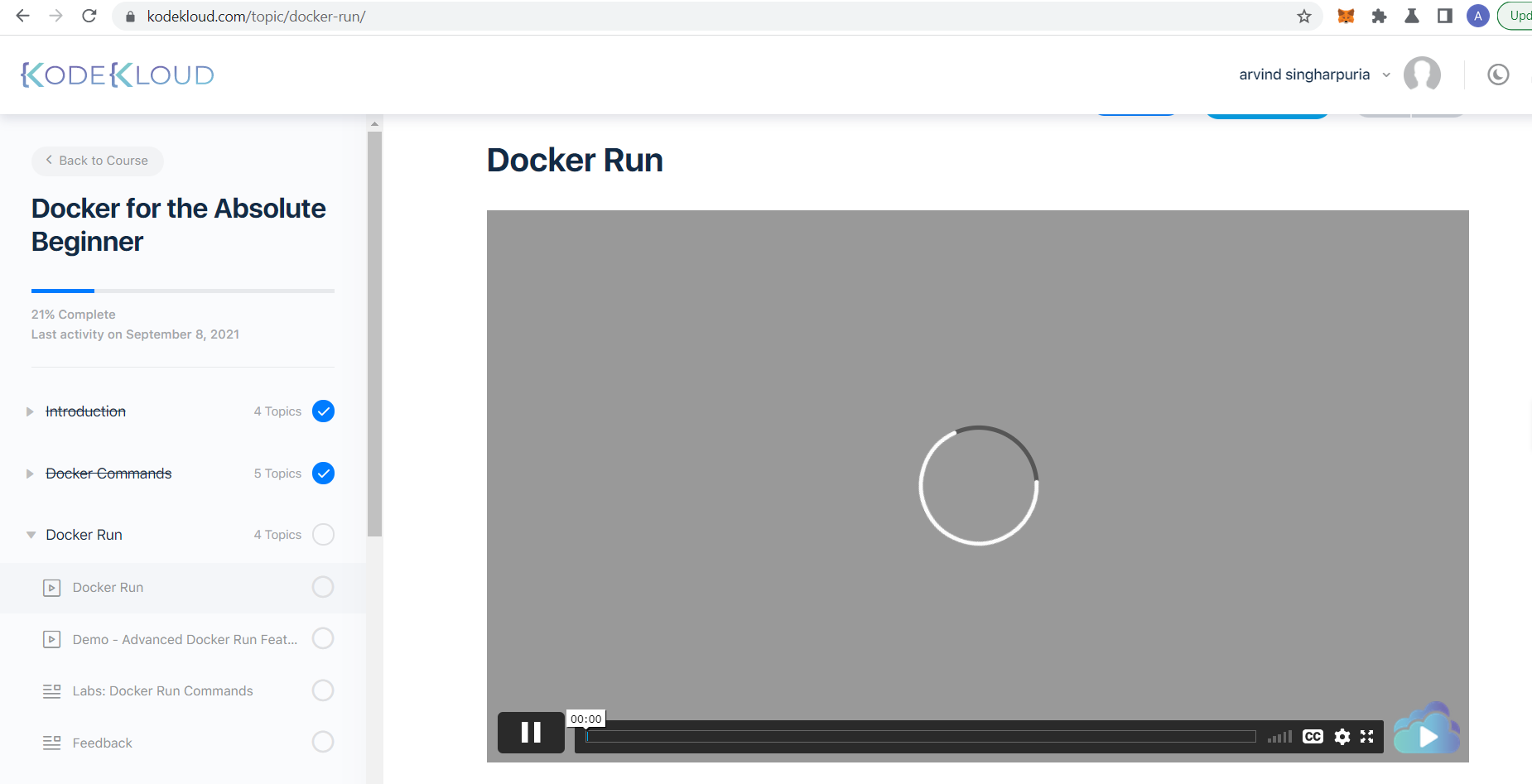
New_image_name –> Name of the new Docker image.Įxample: $ docker commit -m "Installed Node.js" -a "Raj" 6afa8be98b2b itzgeekweb/ubuntu_16.04_nodejs Repository_name –> Name of the additional repository on Docker Hub (If you don’t have one, it would be your Docker Hub username). m –> Commit message to let others know what changes you have made.Ĭontainer_id –> Container id of the customized image (id which you noted during the customizing images section) $ docker commit -m " Commit Message" -a " Author Name" container_id repository_name/ new_image_name Later in this article, we will look into the way to push the Docker image to Docker Hub. When you commit an image, new Docker image will be saved locally, i.e., on your local computer. Running Ubuntu container now has a node.js in it, which is different from the image you used to create it.Ĭommit the changes to a new image using the following command.
Docker run image not working how to#
This section will show you how to save the state of a container as a new Docker image.

If you stop the container, any changes made to the files will be lost any files you deleted previously will now be back when you start the container again.

Docker run image not working install#
apt-get apt-get install -y nodejs Committing Imagesĭocker filesystems are temporary space. Let us install node.js in it as part of our building the image. Once you executed the above command, you would get an # prompt of the container which will have a container id( 6afa8be98b2b). For example, let us run the Ubuntu image with option -it and start customizing it. It is nothing but customizing the containers for our requirements and saving them as an image for future usage. it also displays more in details such as repository name from where it came from, image id, created date, the size of the image and tags.

The above command lists the available images on a local host. Hello-world latest c54a2cc56cbb 4 weeks ago 1.848 kB It is now better to look what are the images available locally on the host. Managing Docker ImagesĪs said earlier, Docker downloads the images from Docker public registry in the case of nonavailability of Docker image on the local host. In this article, we will be looking at managing the Docker images, creating our images and upload them to Docker Hub Registry. As you already know, Docker images are the basis of containers, whenever we launch a container Docker will try to use images that are stored locally on your host and if it is not found, it will download images from Docker public registry. In our previous article, we got to know how to work with Docker containers covered important commands we use to get the things done from Docker containers.


 0 kommentar(er)
0 kommentar(er)
